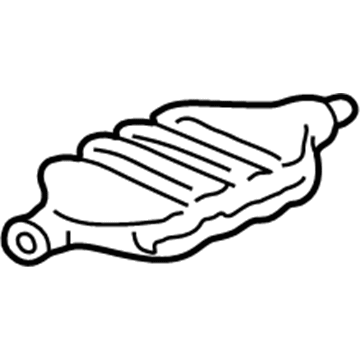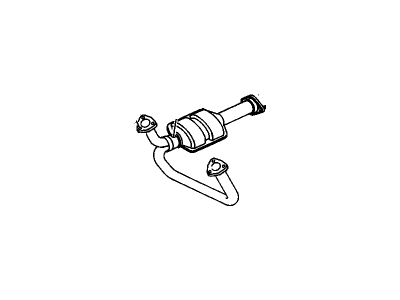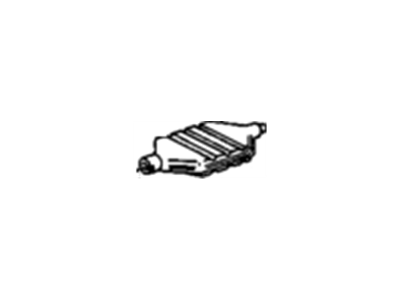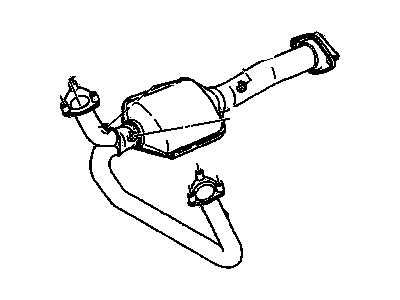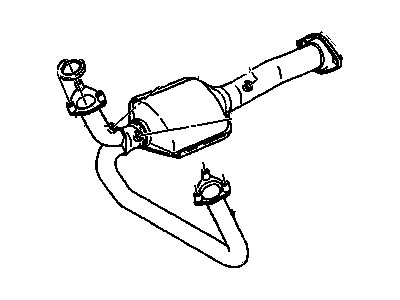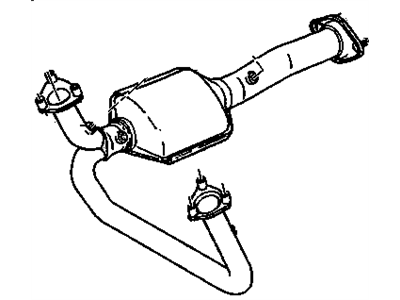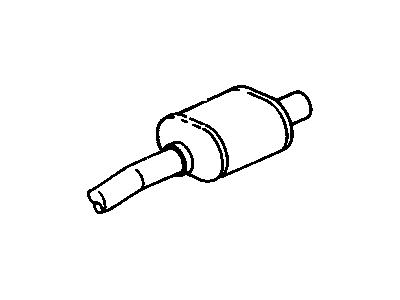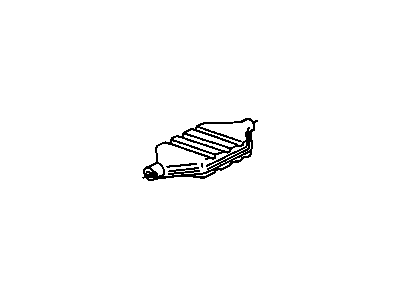
My Garage
My Account
Cart
Genuine Chevrolet K1500 Catalytic Converter
Cat. Converter- Select Vehicle by Model
- Select Vehicle by VIN
Select Vehicle by Model
orMake
Model
Year
Select Vehicle by VIN
For the most accurate results, select vehicle by your VIN (Vehicle Identification Number).
13 Catalytic Converters found
Chevrolet K1500 CONVERTER ASM,3WAY CTLTC (W/EXH MANIF PIPE) "KIT"
Part Number: 19420113$1829.79 MSRP: $2747.21You Save: $917.42 (34%)
Chevrolet K1500 Catalytic Converter
The Catalytic Converter in Chevrolet K1500 vehicles is an exhaust and emission system that helps to change toxic emissions encountered in burning process to substances that are less toxic. It mainly converts carbon monoxide, hydrocarbons, and oxides of nitrogen by chemical redox reactions, using mainly platinum, palladium and rhodium as catalysts and the products formed are; water, carbon dioxide, and nitrogen respectively. The use of these models of the car has seen various catalytic converters used over the years with the earlier versions having two way converters and the later versions having three way converters which also controls NOx. From beads they were laminar and then shaped like honeycomb to improve the gas flow and the interaction of the gas with the catalyst. The performance catalytic converters are available, which have specified high flow rates along with the necessary catalyst efficiency and; they are available in the direct fit and the universal type.
Each OEM Chevrolet K1500 Catalytic Converter we offer is competitively priced and comes with the assurance of the manufacturer's warranty for the part. Furthermore, we guarantee the speedy delivery of your orders right to your doorstep. Our hassle-free return policy is also in place for your peace of mind.
Chevrolet K1500 Catalytic Converter Parts Questions & Experts Answers
- Q: What is the purpose of a catalytic converter and how can you diagnose and repair a malfunctioning one on Chevrolet K1500?A: The catalytic converter is an emission control device added to the exhaust system to reduce pollutants from the exhaust gas stream. A three-way (reduction) catalyst design is used. The catalytic coating on the three-way catalyst contains platinum and rhodium, which lowers the levels of oxides of nitrogen (NOx) as well as hydrocarbons (HC) and carbon monoxide (CO). The test equipment for a catalytic converter is expensive and highly sophisticated. If you suspect that the converter on your vehicle is malfunctioning, take it to a dealer or authorized emissions inspection facility for diagnosis and repair. Whenever the vehicle is raised for servicing of underbody components, check the converter for leaks, corrosion, dents and other damage. Check the flange bolts that attach the front and rear ends of the converter to the exhaust system. If damage is discovered, the converter should be replaced. A catalytic converter may become plugged. The easiest way to check for a restricted converter is to use a vacuum gauge to diagnose the effect of a blocked exhaust on the intake vacuum. Connect a vacuum gauge to an intake manifold vacuum source. Warm the engine to operating temperature, place the transmission in Park and apply the parking brake. Note and record the vacuum reading at idle. Open the throttle until the engine speed is about 2000 rpm. Release the throttle quickly and record the vacuum reading. Perform the test three more times, recording the reading after each test. If the reading after the fourth test is more than one in-Hg lower than the reading recorded at idle, the catalytic converter, muffler or exhaust pipes may be clogged or restricted. Raise the vehicle and support it securely on jackstands. Disconnect the electrical connectors from the Oxygen Sensors. Remove the catalytic converter-to-exhaust pipe flange bolts and separate the exhaust pipe from the catalytic converter. Support the exhaust pipe. Remove the bolts and detach the catalytic converter header pipe from the exhaust manifold. Remove the catalytic converter and pipe assembly. Clean the carbon deposits from the mounting flanges and install new gaskets. Installation is the reverse of removal.
